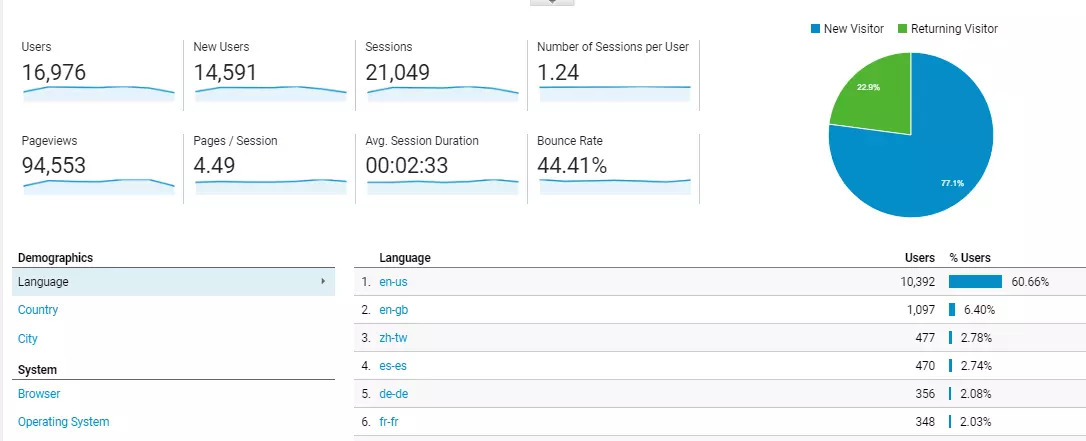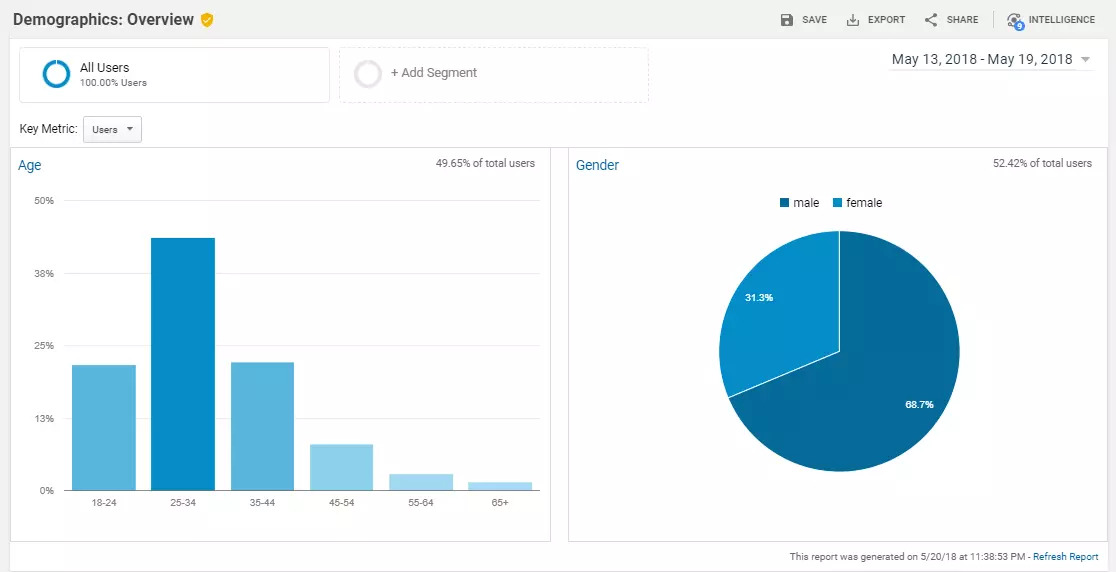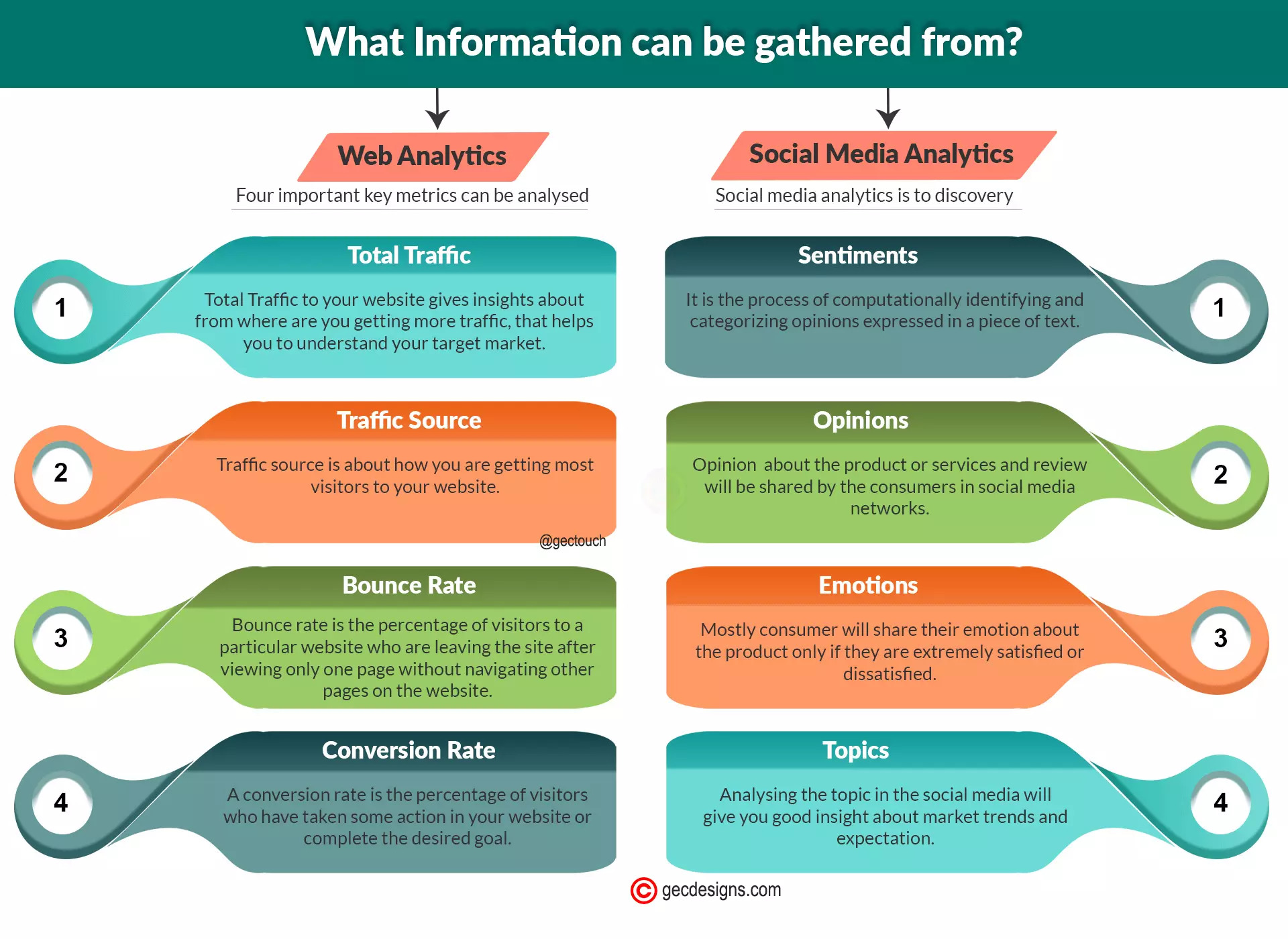Web and social media analytics: A data-driven Optimization techniques
Introduction to Web and Social Media Analytics (WSMA)
Web Analytics
First, Let us understand Web Analytics, by definition “Web analytics is the measurement of data, the collection of information, analysis, and reporting of Internet data for the purposes of optimizing and understanding Web usage. Here the web usage refers to the respective business website usage data.
What are all the information can be gathered from web usage data? And, how could it be leveraged for business benefits? Let us discuss these questions later in this article.
Web analytics is the measurement of data, the collection of information, analysis, and reporting of Internet data for the purposes of optimizing and understanding Web usage.
Social Media Analytics
Now Let us understand social media analytics. Social media analytics is the practice of gathering data from social media websites or networks such as Facebook, Twitter, Google plus, etc., and analyzing those metrics to understand insights to make business decisions.
Most often people confuse web analytics and Social media Analytics, let us have a clear demarcation between these two. Web analytics uses the data collected directly from a particular business website and Social media analytics uses the data collected from social media networks.
What information can be gathered from Web Analytics?
Web analytics Gathers information from the Business website only. In general, Web Analytics tells you about your traffic levels, referral sources, bounce rate, and user behavior on your website.
Web Analytics mainly used to improve the user experience and conversion rate. Below are the few important analysis can be done through web analytics,
- Where are your website visitors coming from?
- On which page of your website they are spending more time?
- How are they connecting to your website?
- Which part of the day is your website getting more traffic?
- How well do you retain users?
In other words, the four important key metrics can be analyzed from web analytics,
- 1. Total Traffic
- 2. Traffic Source
- 3. Bounce Rate
- 4. Conversion rate
Total Traffic
Total Traffic to your website gives insights about where are you getting more traffic, which helps you to understand your target market. In addition, you can analyze which hours of the day and days of the week, you are getting more visits to your websites. Based on this information you can run a campaign to optimize more conversions.
Traffic Source
Traffic source is about how you are getting most visitors to your website. Is it through social media, search engines or Referral Sites? Based on that information you can strategize your marketing campaign or write a blog or focusing on a particular social media network. For example, if most of your visitors are coming from social media networks, use that information to brand your business more on Facebook, Twitter or any other social media platforms to boost your website traffic.
Bounce Rate
Bounce rate is the percentage of visitors to a particular website who are leaving the site after viewing only one page without navigating other pages on the website.
This could be higher for any number of reasons may be,
- Irrelevant content
- Inappropriate designs
- Confusing navigation
- Frequent pop-ups
- Unnecessary ads
- Or, Annoying sounds
However, this metric helps you to improve your web design overall.
Conversion Rate
A conversion rate is the percentage of visitors who have taken some action on your website or complete the desired goal; it could be purchasing a product, Sign up for news letters, etc.
There are many tools available in the market to track and analyze web data, however, Google Analytics is one of the vital tools for any websites, as it offers the chance to obtain and analyze in-depth statistics about who your customers are, what they are interested in, and how they interact with your website or online store. When you take advantage of the information, which Google Analytics offers, you can make data-informed decisions about the best ways to improve business.
Some important insights that google analytics offers are,
Audience Overview Website Traffic trend
Users Behaviour and Bounce rate metrics
Demographics: Overview
There are many more questions that can be answered through google analytics metrics such as,
- How do you acquire users?
- How are your active users trending over time?
- How well do you retain users?
- When do your users visit?
- Where are your users?
- What are your top devices?
- What pages do your users visit?
- How are you performing against goals?
- What are your top-selling products?
- How are your AdWords campaigns performing?
In a separate article, we will discuss how does google analytics help to master web analytics to maximize website conversion rate.
Let us now move on to Social media analytics.
What information can be gathered from Social media Analytics?
Social media analytics gathers information from social media networking sites and helps businesses better understand customer sentiment, users’ attitudes, build rich consumer profiles, and, most importantly, build effective business strategies.
There are many tools available in the market to track and analyze social media data.
The most common use of social media analytics is to discover
- Sentiments
- Opinions
- Emotions
- Topics
Put together known as Sentiment Analysis.
Sentiment Analysis
It is the process of computationally identifying and categorizing opinions expressed in a piece of text, especially in order to determine whether the writer's attitude towards a particular topic, product, etc. is positive, negative, or neutral. Opinion mining or sentiment analysis refers to the use of natural language processing.
Importantly, the first step is to define which business goal we are trying to address through social media analytics.
In general, the business objectives include increasing revenues, reducing customer service costs, getting feedback on products and services, and improving public opinion of a particular product or business division.
A quick recap of information gathering
Importance of social media analytics
There is a tremendous amount of information in social media data. In decades past, enterprises paid market research companies to poll consumers and conduct focus groups to get the kind of information that consumers now willingly post to public social media platforms.
In the past few years, businesses have rushed to use Web and Social Media widely. Almost 94% of all businesses now use some form of social media to promote their brand and engage with customers. While companies sprint to master web and social media marketing, the analysis of data available in web and social media more of a struggle.
The problem is this information is in the form of free text and natural language, the kind of unstructured data that analytics algorithms have traditionally. However, as machine learning and artificial intelligence have advanced, it has become easier for businesses to quantify in a scalable way the information in social media posts.
This allows enterprises to extract information about how the public perceives their brand, what kind of products consumers like and dislike and generally, where markets are going. Social media analytics makes it possible for businesses to quantify all this without using less reliable polling and focus groups.
"Web and Social media analytics is the backbone for every business moving forward.

Rajarajachozhan
Business Owner
An energetic entrepreneur with 12 years of corporate experience in the field of brokerage operations and functions. A Data Science Aspirant - Business Analytics and Business Intelligence postgraduate professional from a reputed B-School in India. His passion for Data Visualization, Web and social media Analytics helped him to become a learner, speaker, and writer in the space of SEO, Digital Marketing, and UI, UX designs.















